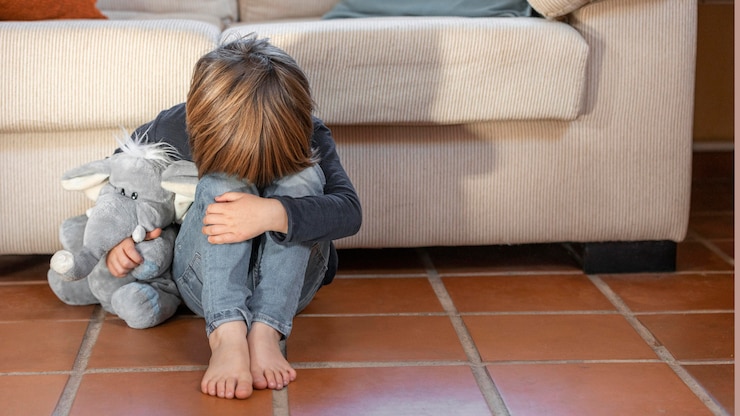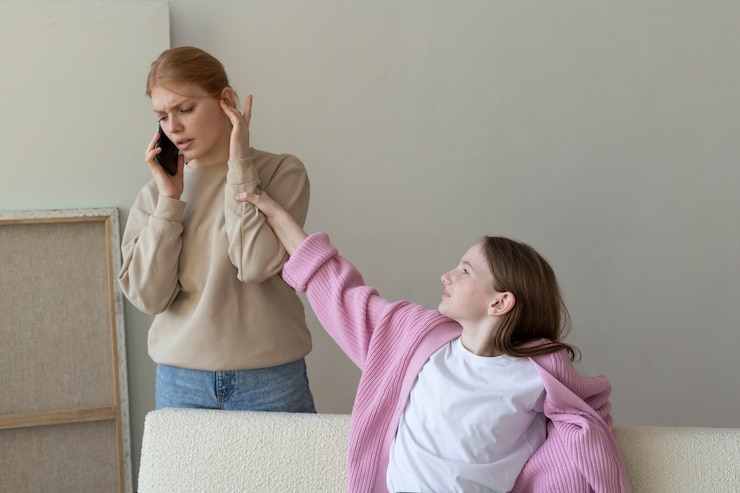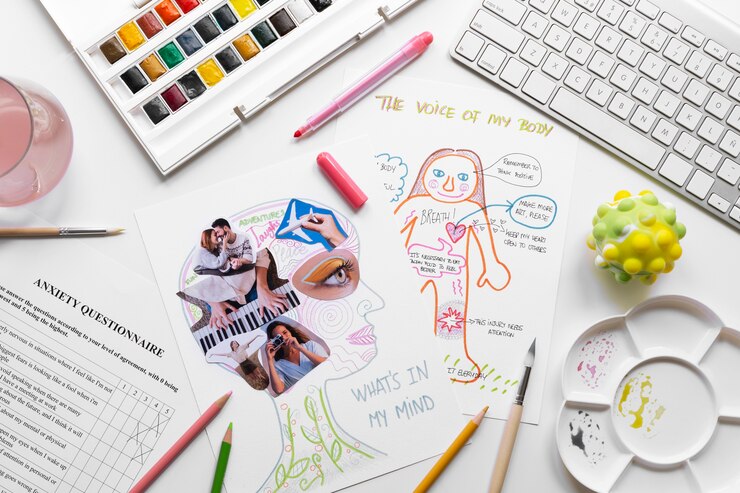
Signs of anxiety in kids can start appearing early on. While some of these signs are easy to spot, others might be subtle or show up in unexpected ways. Here are 10 anxiety symptoms in children that might not be immediately obvious.
**Table of Contents**
“Could my child really have anxiety?” I hear this from about 90% of parents visiting my therapy office, hoping to understand their child’s puzzling and difficult behaviors. They often address these behaviors with strategies like rewards, consequences, and sticker charts, only to find that the behaviors persist or even worsen.
It’s understandable why parents might not immediately recognize signs of anxiety in children. Many of us picture an anxious child as a preschooler clinging to their parent on the first day of school, wearing rain boots and hiding shyly.
Parents are often surprised when I suggest their child’s “misbehaviors” might actually be “distressed behaviors.” This is linked to how our nervous system reacts under stress. A child whose brain enters a fight-or-flight mode can appear defiant.
When our brain senses a threat, it triggers our body to respond as if we are in real danger. This is anxiety. The amygdala, our brain’s emotion center, kicks into gear to protect us, thanks to natural survival instincts. However, factors like genetics, environment, health, and temperament can cause an overactive amygdala, making it hard to differentiate real threats from perceived ones.
When this overactivity leads to stress responses too frequently, children may exhibit behaviors driven by survival instincts.
Here are 10 symptoms of anxiety in kids that often confuse parents, yet are linked to our body’s fight-flight-freeze response:
The most common behavior that throws parents off is emotional reactivity. When living in a constant state of anxiety and overwhelm, it’s natural to react more emotionally. The brain’s emotion center goes into overdrive, making kids more irritable and reactive.
Consider anger management resources, like a therapist’s guide to calming strategies for kids.
“Mom, how much longer until we get there?” While every child asks these questions, an anxious child might ask 25 times during an hour-long trip. Uncertainty is tough for anxious kids, and they seek reassurance by asking questions repeatedly.
“Will I make friends at soccer?” “Am I still a good kid?” “Will I miss you at camp?” Anxiety often makes kids worry something is wrong with them, leading to excessive reassurance-seeking. This can be a symptom of generalized anxiety or OCD, where seeking reassurance helps ease anxious thoughts.
Try exploring calming strategies for kids.
In the fight or flight response, the body undergoes physical changes. For instance, the digestive system slows down to conserve energy, which is why many anxious children complain of a stomachache.
Discover ways to reduce your child’s anxiety today.
Have you ever avoided paying bills or having a tough discussion with your boss? Children with anxiety often avoid situations in an obvious way, which might look like defiance. Common examples include refusing to do something or asserting control when feeling out of control.
Consider practical tools for managing anxiety.
Anxious thoughts often invade when the mind is quiet, making relaxation and healthy sleep difficult. Night waking is also common when the brain is anxious and hyper-alert to any stimuli, like noise or scary dreams.
If you need support, some courses specialize in childhood anxiety, such as those by Natasha Daniels.
Constant stress keeps a child’s brain in survival mode, with the emotional center continually activated. This affects the frontal lobe or “thinking brain,” hindering focus, impulse control, and organization.
Tears during the bedtime routine or packing for school may seem sudden, but they result from emotional overload. This can be triggered by not getting something they want, disagreement, or transitions between activities.
Running away, whether from bedtime or schoolwork, is part of the “flight” response. An overwhelmed child’s brain signals them to escape for survival.
Strengthening your child’s mental health can help manage these responses.
“I want to stay with you and not go to school.” Being close to a caregiver provides temporary comfort for anxious children. The thought of being alone at school can be overwhelming, making it hard for them to use logic and reason.
It’s easy to misinterpret shutting down or acting out as intentional defiance, but these are often symptoms of anxiety. Understanding the neurological roots of anxiety helps parents realize these are not behavioral problems but real symptoms.
Every child displays these behaviors at times. The key difference between typical childhood behavior and those of an anxious child is the significant impact on daily functioning across various settings for a prolonged period. Anxiety in children is common and highly treatable with the right support and treatment.
As Karen Young from Hey Sigmund beautifully writes, “Anxiety is the work of a strong, healthy brain that’s a little overprotective.”
Other helpful resources:
Karen’s book, “Hey Warrior,” uses engaging words and imagery to teach kids about anxiety and finding relief.
Originally published October 18, 2018, this post has been updated.
Gift your child life skills. Join 30,000 other intentional parents receiving the Parents with Confidence weekly emails. You’ll get a free 5-day parenting email course covering:
* how to protect your child’s self-esteem
* gaining your child’s cooperation
* a vital skill for your child’s future
* disciplining without emotional harm
Join now and receive the course!
We’ll never spam you. Unsubscribe anytime.
This opportunity is built with love.



